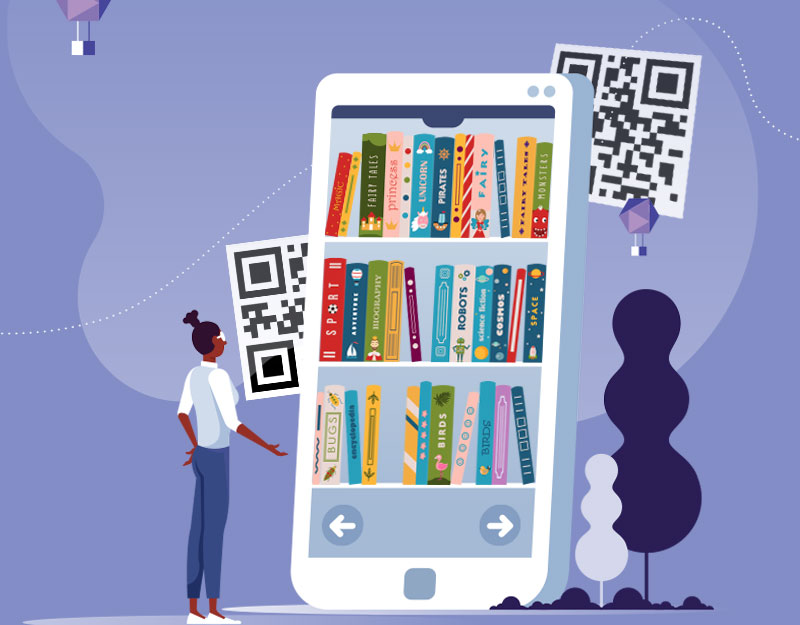2018 School Spending Survey Report
Make Picture Books Browsable | First Steps
What is the best way to organize picture books for the youngest readers with specific interests?
You’re at the information desk and a beleaguered parent comes in with a toddler asking for every train picture book you have, forcing you to jump around your picture books, organized by author’s last name, pulling titles by Brown, Crews, Lewis, and Rinker. Or maybe your picture books are organized by theme—to help with this very scenario—but that has caused confusion. Byron Barton’s books covering dinosaurs, astronauts, vehicles, and classic fairy tales are scattered throughout your theme bins, making them hard to locate and collect for a preschool teacher.
 |
Getty Images |
So, what is the best way to organize your picture books—by theme or alphabetically by author’s last name? This challenge is particularly evident in the early years, since young children often use the picture book section like older children, teens, and adults use the nonfiction one: to look for informational books on topics of interest.
Several librarians I informally surveyed organize some or most of their picture books by theme. “I changed our picture books to categories, and it’s been great!” says Amanda Meyers, youth services librarian at Rockford (IL) Public Library.
“Our categories are Animals, Characters, Concepts, Folk/Fairy, Go, Growing Up, Holidays, Nature, People/Places, Rhymes/Songs, and Stories.” Meyers uses colored labels over the spine labels and says shelving is much easier. “Our patrons are happy because they can head right to their favorite section.”
Emma Thomas, youth services assistant librarian at Vigo County Public Library in Terre Haute, IN, uses both methods. “A lot of our patrons don’t use alphabetization well, so it’s an easy alternative to pick out books on dinosaurs, trains, whatever,” she says. “We have regular alphabetized shelves for the vast majority. I think of our categories as ‘quick picks.’”
Grouping by category is not popular with everyone. One library staff member reported trying theme-based organization, but switched back to alphabetization when staff and the public found it confusing. Books from the “Berenstain Bears” series are particularly vexing, for example, since they cover so many topics. Other librarians who organized by theme noted that families were going only to their favorite topics and missing out on the serendipity of browsing. And some found the various spine labels and catalog tags difficult to manage.
A third option is to shelve alphabetically but create thematic book bundles. At Central Library, the main branch of Brooklyn Public Library (BPL), our resident book-bundle maven is senior children’s librarian Raquel Cion. Each bundle has three picture books on a subject. “Dedicate space in a high-traffic area of your picture book section to display your book bundles,” she suggests. Also, create colorful, reusable theme labels; bundle books with sturdy rubber bands; and prop them up on wire easels. Keep more bundles at the ready to replenish your supply.
For topic selections, Cion recommends keeping track of frequently asked reference questions to use for future bundles. The most popular themes at BPL include unicorns, pets, space, bedtime, and vehicles.
“You can have fun and create your own subjects, like Confused Cows, Lost in Space, or I Don’t Wanna! ” Cion notes. Book-bundle topics can also foster diversity, equity, and inclusion year-round, with bundles labeled Black Joy and Girl Power, for starters. “Some patrons come in, go directly to the book bundles, take a bunch, and head out. It’s their one-stop library shop.”
Another option is to create signage with QR codes or simple URLs linked to booklists on popular topics and post it above the picture book section. At BPL, we have signs for lists supporting New York City’s Pre-K for All thematic units of study. Families and educators can type in a URL or scan a QR code, browse, and place holds. It’s easy to update lists online so signage can be evergreen.
While no method of organization is perfect, find what works for your staff and your public with the goal of uniting the right child with the right book at the right time. As Cion says, “Even the littlest patron has their tastes.”
 Rachel G. Payne is coordinator of early childhood services at Brooklyn Public Library.
Rachel G. Payne is coordinator of early childhood services at Brooklyn Public Library.RELATED
RECOMMENDED
CAREERS
The job outlook in 2030: Librarians will be in demand
CAREERS
The job outlook in 2030: Librarians will be in demand
ALREADY A SUBSCRIBER? LOG IN
We are currently offering this content for free. Sign up now to activate your personal profile, where you can save articles for future viewing





Add Comment :-
Be the first reader to comment.
Comment Policy:
Comment should not be empty !!!